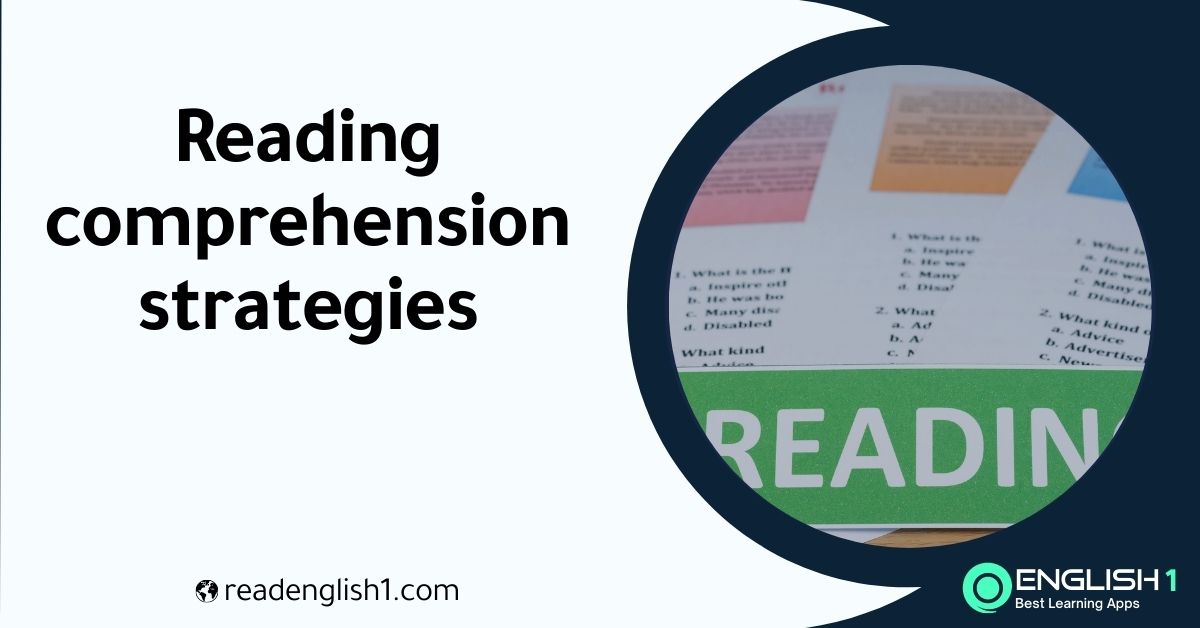Reading comprehension is an important skill that can be used to improve English reading fluency and understanding. Reading comprehension is also necessary for academic success, as well as in the workplace. How well you understand what you read has a direct impact on your ability to understand and retain information. If you want to read faster, you must learn how to comprehend what you are reading. Read more about learn English.
Reading comprehension skills are vital for your English language studies. If you want to read, then you need to be able to comprehend what you read. This article discusses the types of reading comprehension skills and how they can help you improve your English vocabulary. See also, how to improve English reading comprehension.
Reading Comprehension Skills for English Language Learners
Reading comprehension skills are an essential element to learn that can help students with improving their vocabulary. These reading comprehension techniques will improve your understanding of written text, which will in turn result in you writing better and more complex sentences. The article below lists a number of ways for you to use these different types of reading comprehension strategies for English language learners.
1) Use Context clues: This is one method used by many ESL teachers; however, it has not been adopted by the EFL industry because of its simplicity. Simply, context clues help you understand what sort of situation or attitude is being described in a text; for example “with” would describe an action taking place inside an enclosed space, whereas “through” can be used to signify going from one destination to another (e.g., through mountains).
2) Ask questions: Using asking questions will allow students who are having difficulty with reading comprehension to keep track of the information they have read. For example, in order to understand what it means when a verb is left out in our sentence “The man spoke fluent English,” you should ask yourself this question:
In what situation do I find myself/does the author expect me to speak? If none comes up immediately, then don’t be afraid to answer that first question by asking another one such as where are we taking place and why can’t the reader understand what is being said?
3) Look at examples: Work economically with your time by selecting a few tasks you can do to compare and contrast different kinds of sentences. Before doing it, prepare an example sentence which has no other words changed on that specific line; read this example as much as possible without losing track of the original sentence due plan changes. Do not forget to include in both situations – e.g., using context clues or even asking questions – the concept of verb tense in relation to an action that is happening.
4) Ask: The most important rule you should learn when including vocabulary is never ask a question if you already know what has been asked; for example, “Do I need new socks?” Let us assume you have known about it before (e.g., from somewhere else). You will be much better performing what we call ‘inner-spelling’: the process of monitoring your own speech when you speak or write. You can do that by claiming a certain sentence on which you have an idea about what is being asked yourself and locating it in reference to something else (e.g., look at the word ‘socks’ used in two different locations). This will enable us to know whether we should answer “Yes” or “No.”
Why reading comprehension skills are particularly important for ELLs
1) There is no doubt that knowing basic reading skills improve the ability of ELLs to achieve a more effective and efficient literacy. Reading comprehension plays an essential role in learning English as it helps the students
a) understand what has been read;
b) know how exactly one word relates to another. In particular, let’s take note that:
c ) comprehend multisyllabic words or phrases better;
d ) distinguish between similar sounding words or concepts;
e ) compare and contrast synonyms. All these skills help improve ELLs’ writing, both in form as well as content. Reading comprehension is also essential for English learners because it helps them to understand speech, which they are supposed to take part of within the school reading lessons. comprehension skills additional steps for ELLs to improve reading comprehension skills
a) Practice reading aloud. . It is an ELL’s most common classroom task and although it seems simple, one cannot underestimate its importance at this stage in the development of English literary language and vocabulary;
b) Performing role play activities prior to actually taking on new tasks with actual work papers, especially when following a teacher prepared script during lesson time. Role playing practice supports more advanced learning strategies (e. g., the ability to ask questions and produce effectively related responses);
c) Trying reading on their own. This can be done in classroom, at home or even a restaurant where English is spoken;
d) Making connections between what they have read (semantically incidental details), generally referred to as underlining, which overtly supports comprehension development.
For advanced ELLs
a) Using written correlations to build some of the above-mentioned strategies into their reading skills;
b ) Implementing or printing out signal words (e.g., a cross on a page, deaf and dumb symbols as answers/help in understanding new text;
c) Reading step by tiny steps, i.e., using sloped side supports providing gentle lifting up from lower eye levels then place back down to either eye level up, down and then above eye level;
d) Reading by catching a word or a sight-word (reading version other reading tasks within the same text);
e) Improving all of the aforementioned strategies, it is best practice to read through vocabularies of words that are related to those he/she does not know when improving his/her phraseology development. Vocabulary portions in texts can be incorporated into their reading practice. Reading techniques
All new readers should be encouraged to learn and apply various reading techniques as well as improving their abstract comprehension (theory) of the meaning underlying text materials.
All in all, the ELL should be given a chance to learn the basic reading skills in English as soon as possible. The earlier they start learning and practicing, the better they will be able to read proficiently and with understanding at their native level. Reading proficiency is a skill that can be learned over time with practice and perseverance, not by taking shortcuts. You May Like best way to teach kids to read, is English hard to learn.

